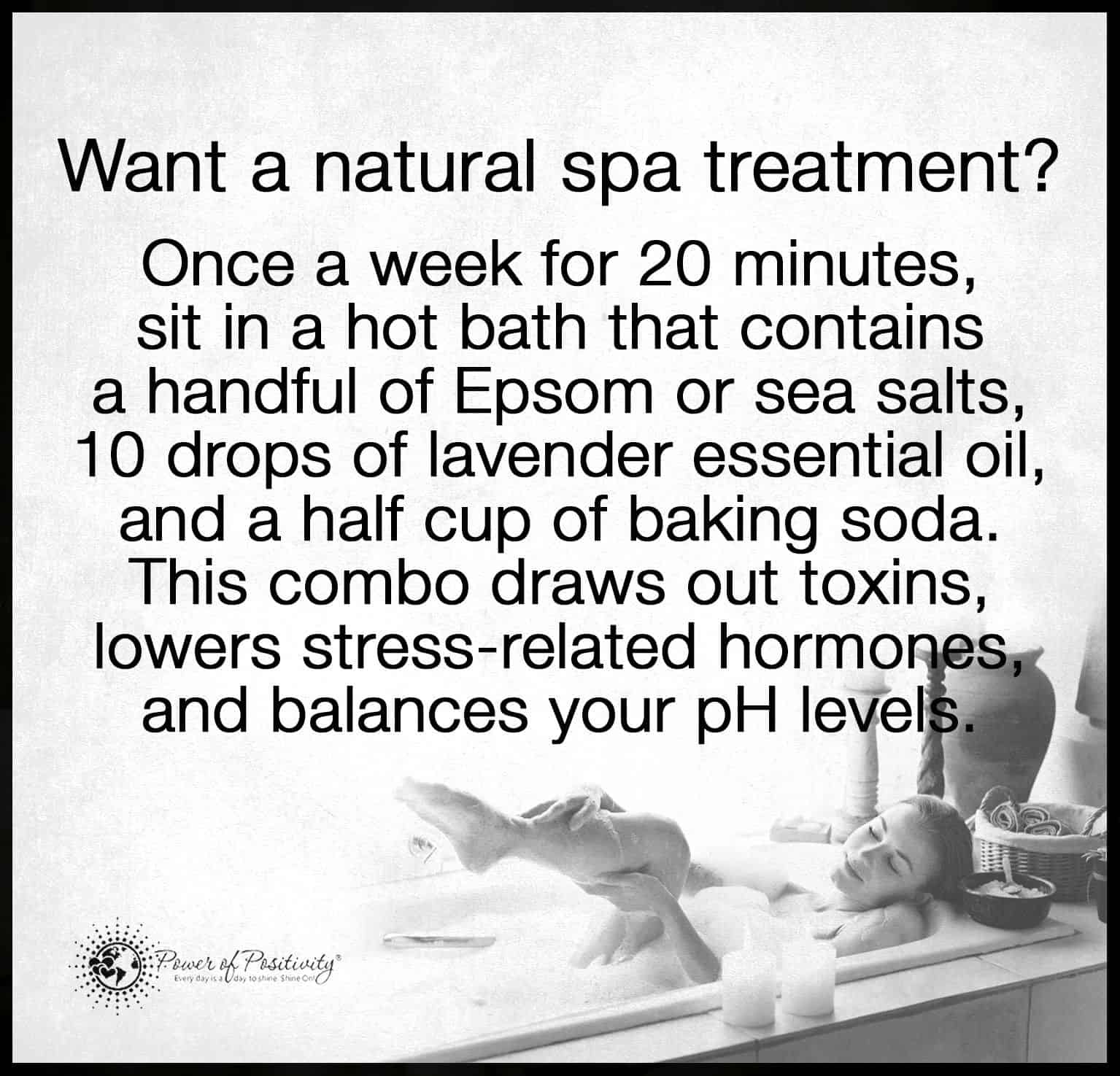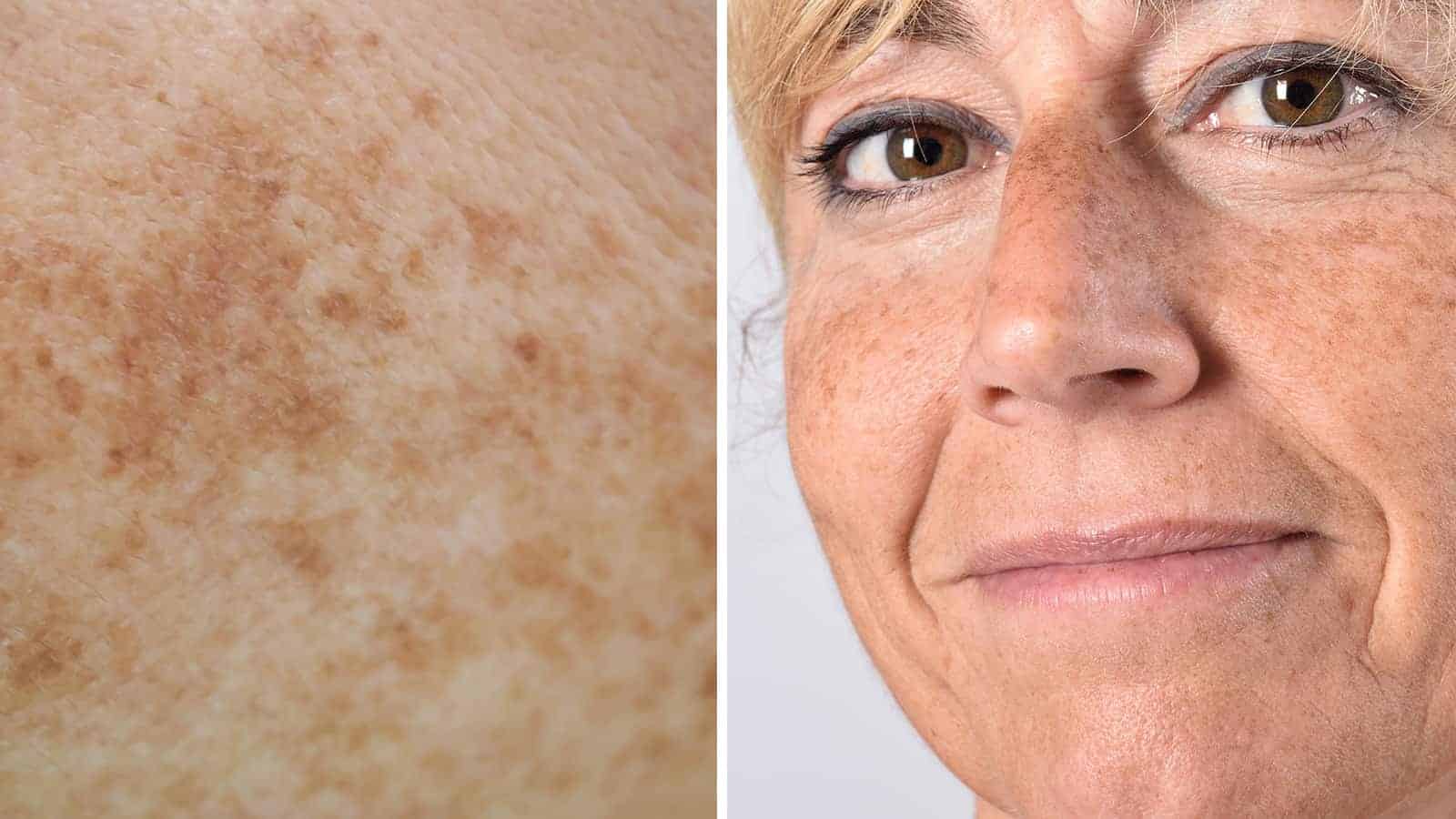Maybe you are like some people who are hesitant to tell their age. You try your best to keep your complexion looking as clear and youthful as possible. Unfortunately, dermatological issues like age spots can betray your secret and even make you look older than you are.
What Are Age Spots?
According to an article published by Collegium Antropologicum, these spots are officially called senile lentigo. An over-pigmentation of melanin causes them, and they usually start popping up at age 50 and over. In the past, most people called them liver spots because they were erroneously associated with liver disease.
Usually, they present as small, dark spots on parts of your body that’s exposed to the sun, including your face, arms, shoulders, and hands. They may be as small as freckles or up to one-half inch in diameter. Frequently, they appear in clusters and make them more noticeable.
What Causes Age Spots?
 No matter your gender or the tone of your skin, you can have this dermatological nuisance. However, those with a lighter complexion are more prone to them. An article published by DermNet NZ states that this hyperpigmentation is often inherited.
No matter your gender or the tone of your skin, you can have this dermatological nuisance. However, those with a lighter complexion are more prone to them. An article published by DermNet NZ states that this hyperpigmentation is often inherited.
These spots are a bit of a misnomer because young adults and even children can get them. One of the most avoidable causes of these dark spots is overexposure to the sun. If you spend too much time sunbathing or frequenting tanning salons, the UV radiation can damage your skin and cause premature aging and blemishes.
12 Skincare Habits to Help the Reduce Appearance of Age Spots
Are developing age spots inevitable? Of course, nobody can stop the gradual effects of time on your complexion. As you go through middle age and into your golden years, you’re bound to see a few wrinkles, sags, and dark spots.
The good news is that you may slow the process with a few simple lifestyle changes. You can enjoy a brighter, more youthful complexion well into your senior years. Here are 12 healthy habits that may reduce your age spots.
1. Enjoy Sunshine in Moderation
Who doesn’t enjoy the warm, invigorating rays of our nearest star? Without the light and heat of the sun, life on earth would be impossible. However, too much of its radiance can be harmful to your skin.
While your body needs sunlight to produce Vitamin D, an overdose of its ultraviolet radiation can damage your skin, cause dark age spots and even skin cancer. Remember always to wear sunscreen, keep your skin shaded, and avoid the peak hours of afternoon sunshine.
2. Use Lemons
Remember how your grandmother recommended lemon juice to lighten freckles? It turns out that this citric wonder can also fade the discoloration of age spots. According to an AARP article, the citric acid in lemon juice naturally lightens dark spots on your skin.
Just cut a fresh lemon in half and rub it gently on your skin areas with dark patches and spots. Follow by rinsing with cool water and blotting with a towel. If your skin is sensitive, you can dilute fresh lemon juice with a bit of water and apply it with a cotton ball.
3. Potato Rub
If you have dark spots on your skin from age or sun damage, then this spuds for you. The vitamins and minerals in potatoes help boost your skin’s collagen and buff away dead skin cells. They can make the darker areas of your complexion seem a little less noticeable.
Cut a medium potato into thin slices and place them on any dark spots or clusters that you hope to fade. Since your skin cells do most of their shedding and rejuvenating while you sleep, make this part of your night regimen. Leave the slices on for about 10 minutes, then wash with cool water.
4. Honey, You’re Beautiful
Do you want a few skincare secrets from legendary beauties like Queen Cleopatra? Since ancient times, honey has been treasured for food, medicine, and radiant skin. An article published in the Journal of Cosmetic Dermatology, honey is a natural antimicrobial and can act as an antiaging lotion for your skin.
Use your fingertips to apply raw honey to your skin. Let it sit for about 20 minutes before rinsing. It will exfoliate dead skin cells and promote a gentle fading of dark spots.
5. A Dash of Buttermilk
Dairy products like buttermilk have long been used to promote a healthy complexion. Buttermilk has vitamins and lactic acid that can effectively lighten spots, according to science. Dab some cotton balls in a small dish of buttermilk and gently rub it into your skin, followed by rinsing in 20 minutes.
6. Lighten Up with Cucumbers
If you’ve ever visited a day spa, you’ve probably relaxed by the pool with slices of cool cucumbers over your eyes. They naturally hydrate and reduce puffiness and dark circles, as they contain antioxidants. The same effect can also be used on dark spots.
Place slices of fresh cucumber on dark patches of your skin and rest for about 20 minutes. You will feel the soothing coolness as the cucumber plumps and rejuvenates your skin. You’ll also notice that dark spots will seem lighter when you do this treatment every day.
 7. Oatmeal
7. Oatmeal
Not only is oatmeal a delicious part of a healthy diet, but this whole grain is a lifesaver for your skin. For generations, people have trusted warm oatmeal baths and skin masks to soothe sensitive skin. A bit of oatmeal mixed with water can gently exfoliate your skin while gradually making dark spots less noticeable.
8. Aloe Vera
For centuries, lovely ladies of the desert relied on aloe vera plants to keep their skin supple and glowing. Aloe vera gel has natural antioxidants and vitamins that can
diminish the look of fine lines and wrinkles and lighten hyperpigmentation.
Apply aloe vera gel to your face, hands, and arms and let it gently absorb into your skin. Let it sit for 15-20 minutes, then rinse with cool water. Aloe is so mild that you can use it every day.
9. Apple Cider Vinegar
When women of the past wanted younger-looking skin with fewer dark spots, they reached in the pantry for apple cider vinegar. This perennial home remedy has been used for everything from better digestive health to a daily skin tonic.
Soak some cotton balls in a bit of apple cider vinegar and gently dab it on places you want to lighten. The mild acid cleans away microscopic debris and dead skin cells, giving your complexion an attractive glow. Rinse with cool water and follow your regular beauty routine.
10. Chickpeas
You adore this quintessential legume in hummus, but did you know it can also fade dark spots on your skin? The secret is how rich they are in magnesium, a vital mineral that can help smooth your skin and reduce hyperpigmentation.
In a medium bowl, add a can of chickpeas and one-fourth cup of water. Use a fork to mash them into a pulp that you can use to dab on dark splotches on your skin. After it sets for about 15 minutes, wash it away with cool water and then use moisturizer.
11. Papaya Seeds
The health food world has been buzzing about the benefits of papaya for quite a while. As a skin tonic, papaya and its seeds can help treat acne breakouts and hydrate dry skin. It also has antioxidants that act as a natural fading cream.
Scoop seeds from unripe papaya and puree them in a food processor. Gently rub the paste onto your skin and let it sit for 15-20 minutes. Rinse with cool water and follow with toner and moisturizer.
12. Horseradish
This potent root usually serves as a condiment. However, compounds in horseradish act as a natural bleach and can fade irritating dark spots on your skin. When you mix it with a bit of apple cider vinegar, you get double the bleaching strength.
In a small glass jar, grate a five-inch piece of horseradish and mix with one-half cup of apple cider vinegar. Shake well to blend. Please place it in the refrigerator to marinate for at least 14 days, shaking it daily.
Use this horseradish bleach on dark patches three times a day for 30 days. Rinse your skin well afterward. Keep unused portions in the refrigerator. Your spots will be lighter, and you won’t notice them as much.
Word of Caution of Treating Age Spots at Home
Everyone’s skin is different, and you may be sensitive to even some natural ingredients. If you experience any adverse reaction to these home remedies such as burning, itching, or swelling, discontinue at once. However, these ingredients are mild and are usually well-tolerated.
 Final Thoughts on Treating Age Spots
Final Thoughts on Treating Age Spots
You needn’t spend a fortune on expensive fading creams and lotions from the drug store. Instead, you can use common ingredients in your kitchen to effectively fade age spots and dark patches. While they won’t completely disappear, they will be lighter, and you will have more confidence in your radiant complexion.

















